BenQ XL2720T Gaming Monitor Reviewed
by Chris Heinonen on June 17, 2013 4:35 PM ESTOur second calibration target is designed for print work, with a light output of 80 nits instead of 200 nits, and the sRGB gamma curve instead of the 2.2 Power Curve.
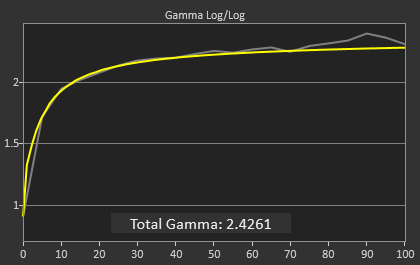
The grayscale continues to be excellent, even better than with the first calibration but you wouldn’t be able to tell even if they were side-by-side. There is a bit of a spike in the gamma that keeps it from being perfect, but even that spike doesn’t cause the dE2000 to rise at all. The biggest problem is that the contrast ratio has fallen down to 488:1 from the prior 820:1 level. Possibly the LED backlight doesn’t dim enough for the darkest settings, or the maximum light output was still too high and the LUTs had to be heavily lowered, either of which will cause a loss of contrast ratio. That issue aside, the grayscale calibration is very good.
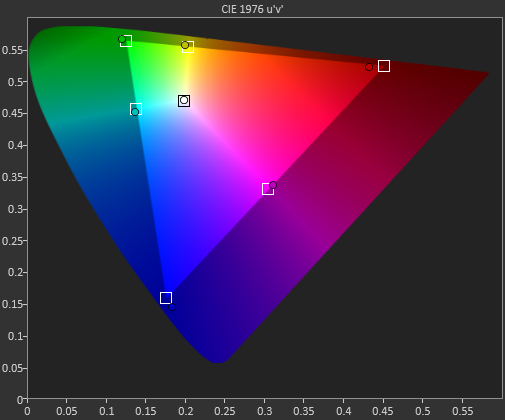
Color gamut is almost identical to at 200 nits. Too low of luminance in green, too little saturation in red, otherwise pretty good.

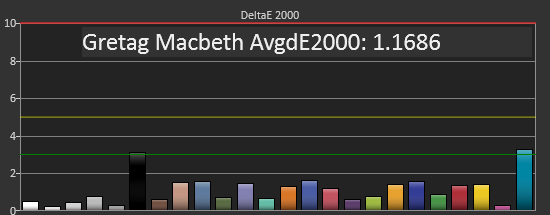

The colorchecker data here really surprises me. The yellow-orange shades that have been causing us such issues are no longer a problem. Now that shade of blue that lies on the edge of the sRGB target is causing the issue. I imagine the blue issue is related to the lack of green luminance, which affects cyan shades because of that. At lower light output levels, the error level in blue readings can be higher, since their light output is low to begin with, and if the green component is low in luminance, that can cause a much larger drop in the light output, leading to a larger error. Looking at the DeltaL chart for this measurement shows that it is quite low in luminance, which is almost certainly causing most of that color error. As to why orange-yellow shades improved so much, I have absolutely no idea.
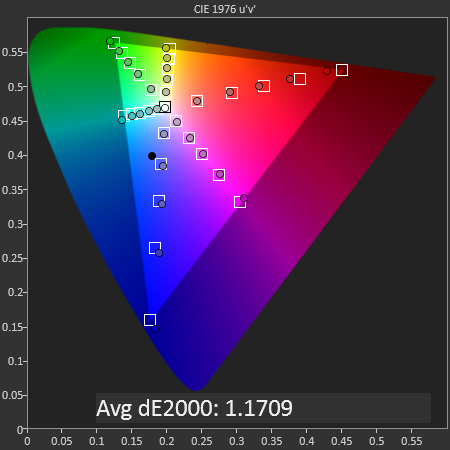
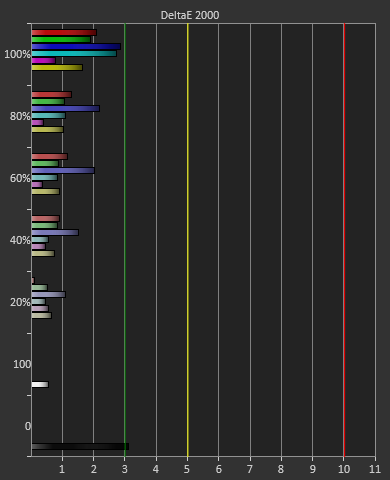
Saturations are much like they are on the last calibration, with 100% having the largest error and the numbers falling from there. 100% numbers are harder to correct since those saturations might be lacking luminance or saturation, which can’t be corrected. If a saturation below 100% is lacking saturation, we can increase that to compensate, which will reduce error, but that can’t be done with the 100% values.
Overall the sRGB target calibration is also very good, with a couple issues that came up. The biggest concern to me is that the contrast ratio drops so much, which will lead to a flatter, more washed-out image in appearance, but I didn’t see a way to correct it in several more calibration attempts.


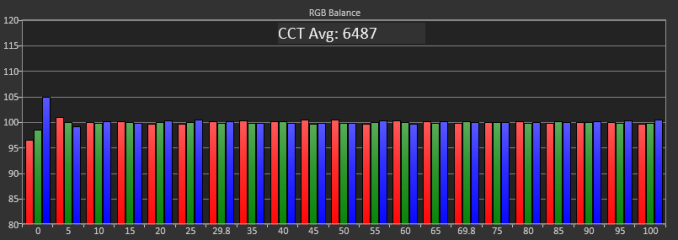
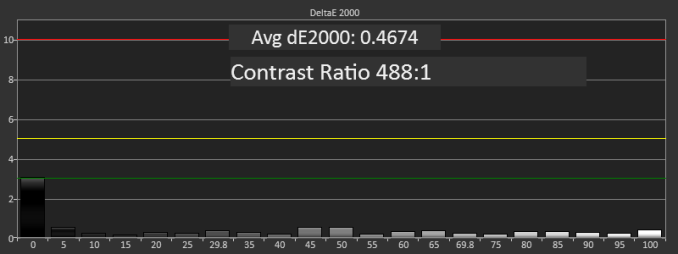










79 Comments
View All Comments
Panzerknacker - Tuesday, June 18, 2013 - link
Yes they did, TN panels just produce such mediocre image quality that there is no immersion anymore of any kind. Lighting effects are just colored spots on a TN, black levels are non existant, if you move from CRT to TN you will just give up on gaming, trust me. Plasma is the best of the currently available displays, good respons and superior image quality, but they start at 40 inches which is too big and you cannot comfortable use them for still images such as desktop due to burn in problems.qiplayer - Saturday, November 9, 2013 - link
See my 5800x1080 fast gaming on youtube channel qiplayer. Im here looking for 120hz, I actually own 3 asus ve278, the image is great the only downside is blur image when moving fast. But whatch the vid, you'll see that you can actually game quite fast also on 60hz monitors.bji - Monday, June 17, 2013 - link
The retina display in my macbook pro looks better than any CRT I ever saw, hands down.Also I put an older Mitsubishi Diamondtron 21 inch next to a fairly old Dell 24 inch IPS panel and I didn't find that I favored one over the other.
BillyONeal - Monday, June 17, 2013 - link
The retina is an IPS panel, so I don't see what point you're trying to make here.A5 - Monday, June 17, 2013 - link
You must only be remembering the good CRTs. Bad CRTs were really, really bad.Not to mention heavy, power inefficient, giant bezels, expensive, etc. I sure as hell wouldn't be able to afford 2 1080p+ CRT monitors, and they probably wouldn't fit on my desk, either.
mdrejhon - Tuesday, June 18, 2013 - link
Panzerknacker, have you tested LightBoost? Google "LightBoost:They give you perfect CRT quality sharp motion on an LCD:
-- Fast panning as perfectly sharp as stationary images.
-- I can read text even during fast scrolling
zehoo - Tuesday, June 18, 2013 - link
Perhaps you should try one of the Korean IPS or PLS 2560x1440 panels that overclock to 120hz if you want better colour reproduction than a TN panel while still having low input latency (models with OSD bypass) and a decent refresh rate. I haven't been able to go back to a 1080 TN 120hz panel since using one.Of course 120hz TN lightboost hack panels is where it's at for the moment if you need low input latency and fast refresh rates for competitive gaming. The trade off being superior colours. By the way I moved from CRT to LCD and didn't stop gaming. Though I only moved when 120hz TN panels first became available.
EnzoFX - Monday, June 17, 2013 - link
Processing lag. I would think this would still be #1 priority for a gamer. I'm surprised it's so high.Guspaz - Monday, June 17, 2013 - link
The first page is called "INTRODUCTION, DESIGN AND SPECS", but there are no specs on the page. I don't even see any mention of the resolution. Is it 1920x1080, 1920x1200, 2560x1440, 2560x1600? There should be a table on this page listing all the details: manufacturer, model, size, resolution, panel type, price, inputs, etc.metril - Monday, June 17, 2013 - link
The first thing I looked for was the monitor resolution and other necessary information. I found nothing. How am I supposed to trust this review if none of the relevant information is presented?